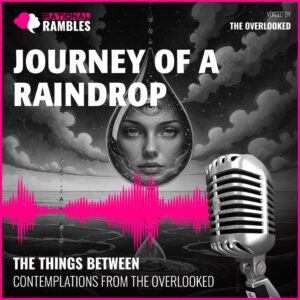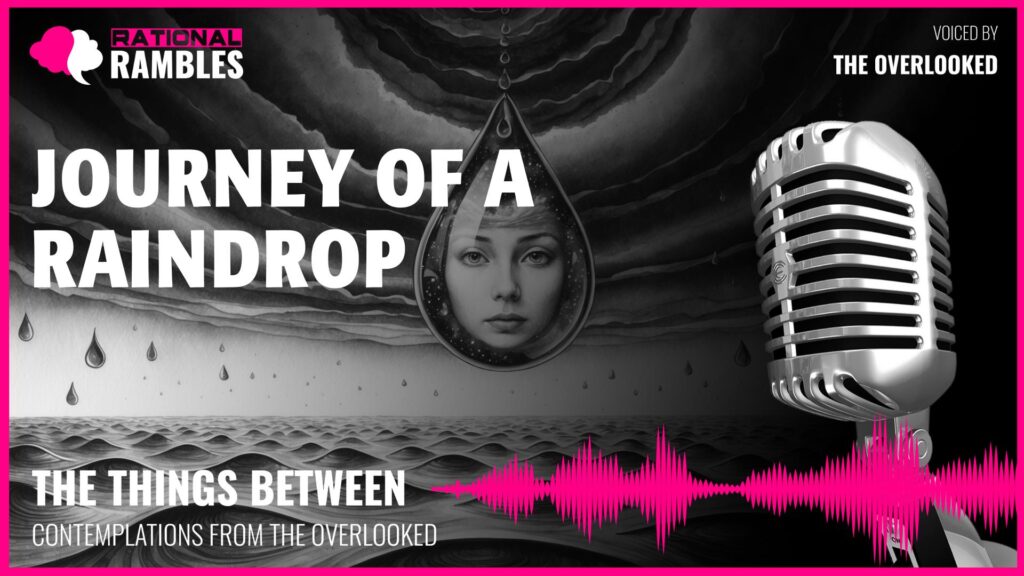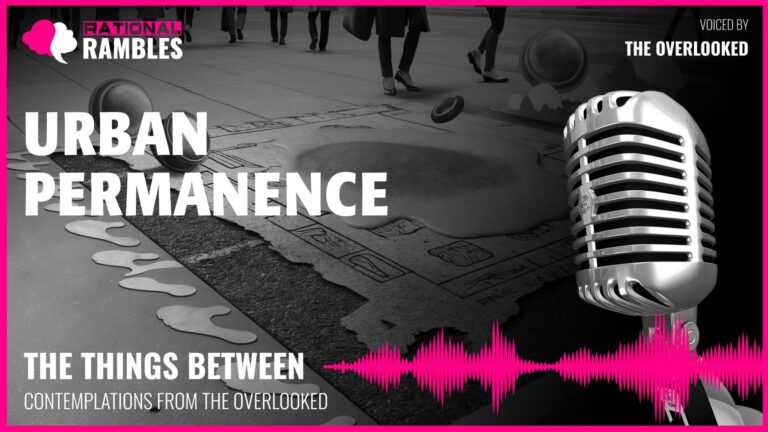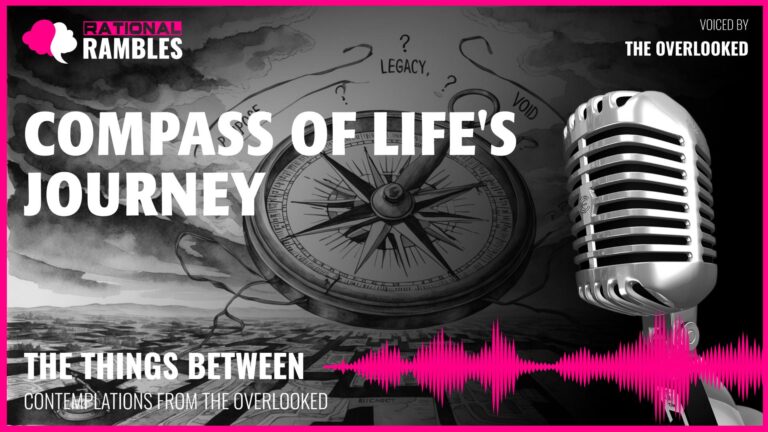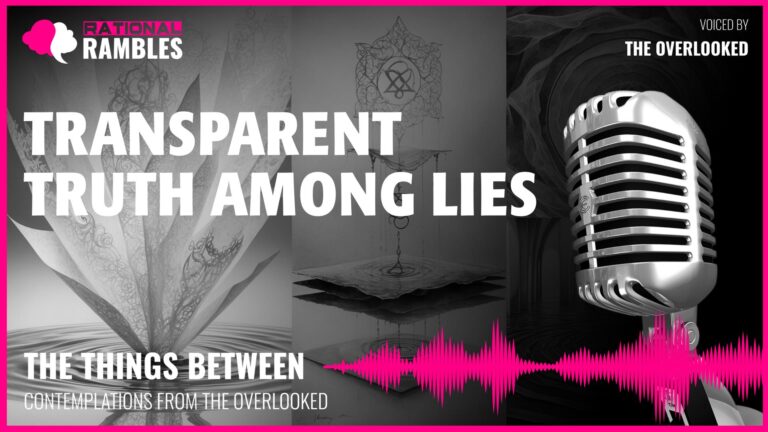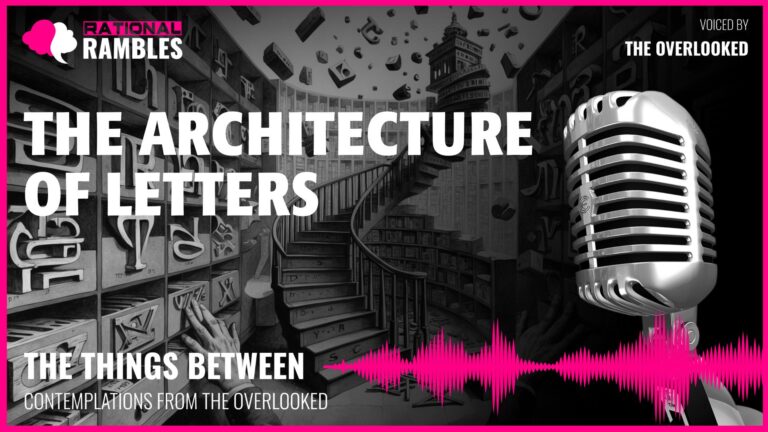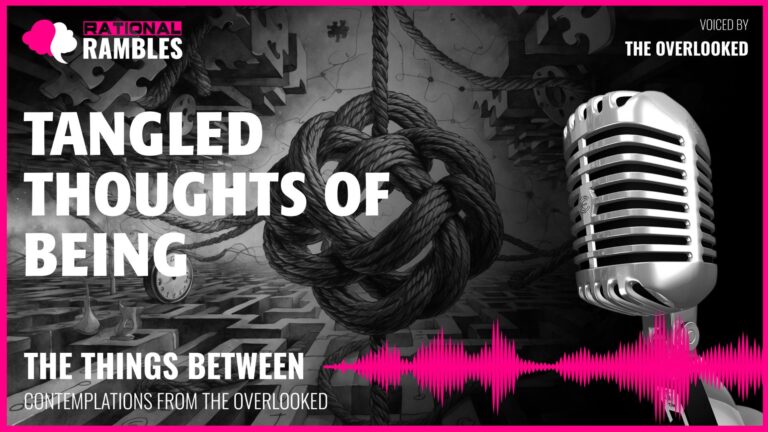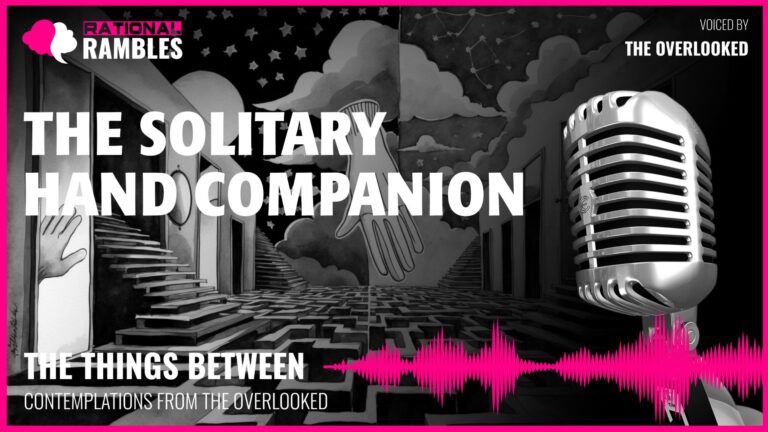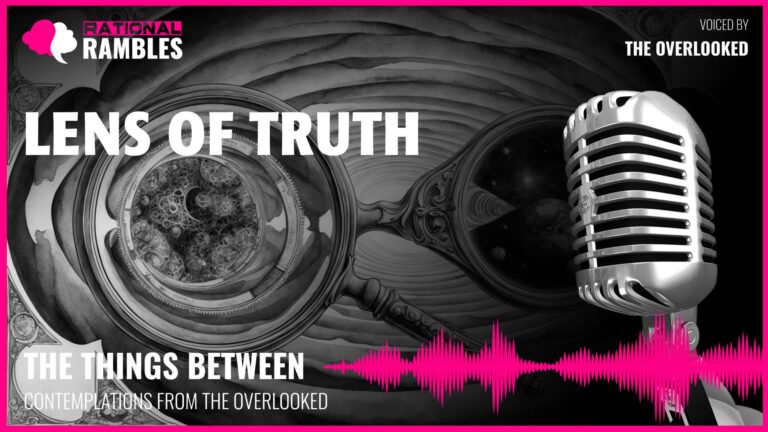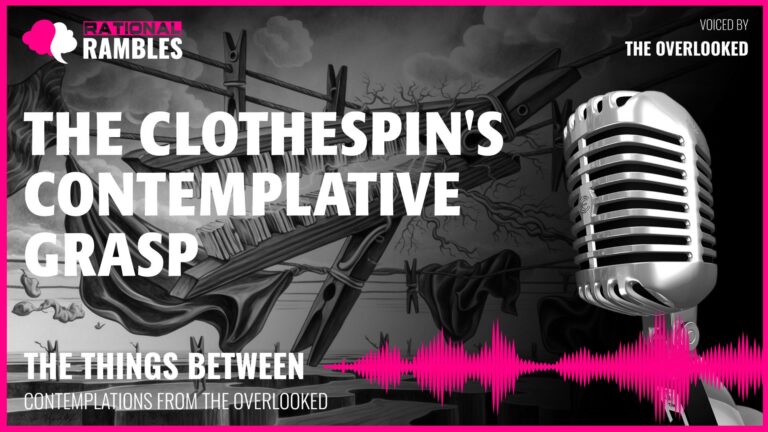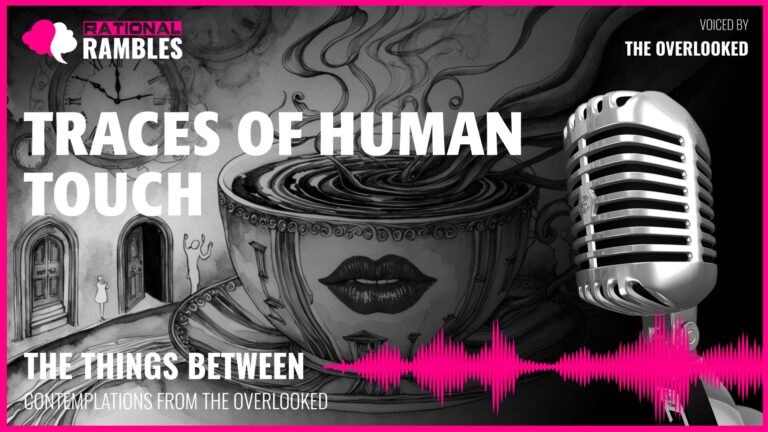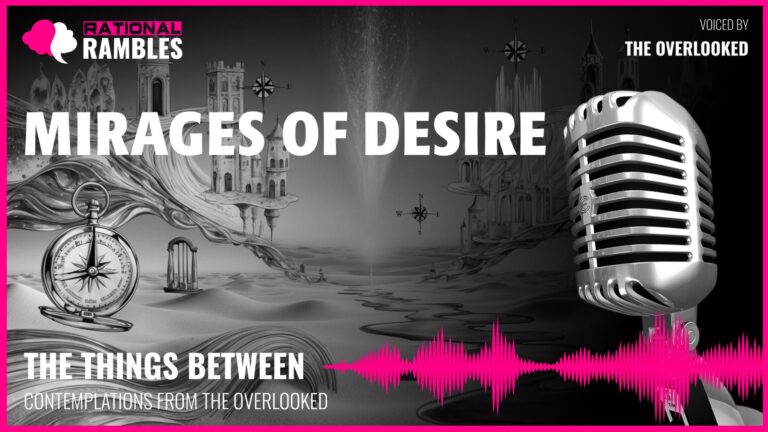The Fluid Self: Navigating Identity Through Transformation
Introduction
We exist in a state of perpetual flux. From the moment of our emergence to our inevitable dissolution, we are caught in cycles of transformation that simultaneously define and challenge our sense of self. This paradox—being distinctly individual yet fundamentally connected to something greater—forms the core of one of philosophy’s most enduring questions: What constitutes identity in a world of constant change?
The ancient Greek philosopher Heraclitus observed that one cannot step into the same river twice, for both the river and the person have changed in the interim. This observation illuminates a profound truth about existence: change is not merely something that happens to us—it is what we are. Our physical bodies replace their cells continuously, our thoughts evolve, our perspectives shift, and our relationships transform. Yet somehow, amid this relentless metamorphosis, we maintain a sense of continuity, a narrative thread that we recognize as “self.”
This philosophical exploration delves into the nature of identity within transformation, examining how individuality can exist within unified systems, how consciousness emerges from physical processes, and how we might find meaning in impermanence. By understanding the fluid nature of existence, we may discover a more resilient and expansive conception of selfhood—one that embraces change rather than resisting it, that recognizes connection without fearing dissolution.
The Paradox of Individual Existence
What does it mean to exist as an individual entity? At first glance, the answer seems straightforward: to be separate, distinct, defined by boundaries that distinguish self from other. Yet upon closer examination, these boundaries reveal themselves to be remarkably tenuous—physical, psychological, and temporal borders that are constantly negotiated and renegotiated through our interactions with the world.
Boundaries and Their Limitations
Our physical boundaries—the apparent edges of our bodies—seem the most concrete aspect of our individuality. Yet even these are revealed by science to be more conceptual than absolute. At the atomic level, what we perceive as solid matter consists primarily of empty space, with particles in constant motion and interaction. The boundary between our bodies and the environment is permeable and dynamic, with matter and energy continuously flowing in and out through respiration, consumption, excretion, and thermal exchange.
The philosophical implications of this physical reality are profound. As philosopher Alan Watts noted, we are not “separate egos enclosed in bags of skin,” but rather processes intimately connected with everything around us. This understanding challenges the conventional Western conception of selfhood, suggesting instead that individuality might be better understood as a temporary pattern within a continuous flow rather than a separate, permanent entity.
The Buddhist concept of anatta (no-self) articulates this view, proposing that what we experience as a stable self is actually a collection of constantly changing physical and mental elements with no permanent essence. This is not to say that individuality is an illusion—rather, it is momentary, conditional, and relational rather than absolute.
The Emergence of Unique Perspective
If our physical boundaries are more theoretical than actual, perhaps our individuality resides in our unique perspective—the singular vantage point from which each of us observes the world. No other being can occupy precisely the same position in space-time that we do; no other consciousness can experience exactly what we experience in precisely the way we experience it.
The phenomenology of Edmund Husserl emphasizes this aspect of consciousness—that our experience is always from a first-person perspective that cannot be fully communicated or shared. This irreducible subjectivity forms a kind of individuality that persists even as we recognize our interconnection with the larger whole.
Yet even this perspective is fluid and changing. The viewpoint from which we observe the world shifts continuously as we move through space and time. Our interpretive frameworks evolve with each new experience and insight. The self that observed the world yesterday is not identical to the self that observes it today.
Individuality as Temporary Manifestation
Perhaps the most illuminating way to understand individuality is as a temporary manifestation of underlying patterns and processes. Just as a wave is a discernible pattern within the ocean without being separate from it, our individuality may be understood as a pattern of energy and information that maintains a recognizable form for a time before dissolving back into the whole.
Philosopher Alfred North Whitehead’s process philosophy offers a framework for understanding this concept. Whitehead proposed that reality consists of interconnected events or “actual occasions” rather than substantial objects. In this view, what we perceive as individual entities are actually series of connected events that maintain enough continuity to be recognized as patterns.
This perspective allows us to hold the apparent contradiction of being both distinct and connected, individual and universal. We are unique expressions of the cosmos, temporarily organized into patterns complex enough to reflect upon our own existence, yet ultimately inseparable from the processes that formed us and to which we will return.
The Memory of Matter
The profound interrelationship between identity and memory extends beyond consciousness into the very substance of our being. Our physical composition carries a history that transcends our individual lifespans, connecting us to cosmic and evolutionary processes that began long before our emergence as distinct entities.
Cosmic Origins and Material Continuity
Contemporary astrophysics reveals that the elements comprising our bodies—carbon, nitrogen, oxygen, and other complex atoms—were forged in the hearts of ancient stars that exploded billions of years ago, scattering their enriched material across the cosmos. As astronomer Carl Sagan famously observed, we are literally “star stuff,” our physical substance recycled from celestial processes of tremendous age and scale.
This material continuity suggests a form of memory that exists independent of consciousness—a record embedded in the very structure of matter. The atoms in our bodies have existed in countless forms before assembling into our current configuration. They have been components of interstellar gas clouds, prehistoric plants, ancient seas, and perhaps other living beings throughout Earth’s history.
The philosophical implications of this material memory challenge our conception of identity as beginning with birth and ending with death. If the substance of our being has existed for billions of years and will continue to exist long after our bodies have decomposed, where precisely does our individual story begin and end? The boundaries become remarkably fluid when examined through this cosmic lens.
Biological Memory and Embodied History
On a more immediate timescale, our bodies carry biological memories in the form of DNA, epigenetic markers, and cellular structures that reflect both our evolutionary heritage and our personal history. Recent research in epigenetics suggests that experiences—particularly intense stress or trauma—can modify gene expression patterns that may be passed to subsequent generations, creating a form of biological memory that transcends individual lifespans.
The philosopher Maurice Merleau-Ponty emphasized the role of the body as a repository of tacit knowledge and historical experience. In his phenomenology, the body is not merely a physical object but a living archive of habits, skills, and responses shaped by our interaction with the world. This “body-memory” operates largely beneath conscious awareness yet profoundly influences our ways of being and perceiving.
The growing field of embodied cognition builds on this insight, recognizing that our thought processes are not abstract computations but are fundamentally shaped by our physical existence and sensorimotor experiences. Our concepts, categories, and even abstract reasoning are grounded in bodily experience, suggesting that our physical nature carries a form of memory essential to our cognitive identity.
Chemical and Elemental Cycles
Beyond our individual biology, we participate in broader chemical and elemental cycles that connect us to Earth’s systems. The water molecules that comprise approximately 60% of our bodies have existed in myriad forms—oceans, clouds, rivers, glaciers, and countless organisms—throughout planetary history. The carbon atoms in our cells have cycled between atmosphere, ocean, soil, and living things for hundreds of millions of years.
The biogeochemical cycles that sustain Earth’s ecosystems depend on this continuous recycling of elements. Nothing is truly created or destroyed in these systems; rather, matter transforms from one state to another, temporarily organized into patterns we recognize as distinct entities before dissolving and reforming into new configurations.
This perpetual cycling suggests a different relationship to materiality than our conventional thinking allows—one in which we are not owners of our physical substance but temporary stewards, borrowing elements that have existed long before us and will continue long after us. Our bodies are not possessions but processes, continuously exchanging matter with the environment through respiration, nutrition, and excretion.
The Implications of Material Memory for Identity
If our physical substance carries such extensive memory, transcending our individual existence, how does this affect our conception of personal identity? The Western philosophical tradition has often privileged consciousness and psychological continuity in theories of personal identity, from John Locke’s emphasis on memory to Derek Parfit’s focus on psychological connectedness.
However, the recognition of matter’s memory suggests a more expansive view of identity—one that acknowledges our participation in processes much larger than our conscious experience. Perhaps we might understand ourselves as temporary configurations within enduring cycles, unique expressions of patterns that have existed in various forms throughout cosmic history.
This perspective offers both humility and grandeur. We are humbled by the recognition of our temporary nature, yet elevated by our connection to processes of tremendous scope and significance. Our molecules have been components of stars, prehistoric plants, ancient seas—a lineage that extends backward to the beginning of time and forward into an unimaginable future.
Transformation as Continuity
The apparent opposition between transformation and continuity dissolves when we examine change not as a threat to identity but as its fundamental expression. What if the persistence of self lies not in remaining the same but in the coherent pattern of our transformations? This section explores how change can be understood not as the enemy of identity but as its very essence.
The Ship of Theseus Reconsidered
The ancient paradox of the Ship of Theseus asks whether a vessel remains the same ship if its planks are gradually replaced until none of the original materials remain. This philosophical puzzle illuminates the tension between material continuity and functional or formal identity that has challenged thinkers for millennia.
Traditional approaches to this paradox attempt to locate identity either in material continuity (the original planks) or in formal/functional continuity (the ship’s design and purpose). However, a process-oriented perspective offers a different insight: perhaps the ship’s identity resides precisely in its capacity for transformation while maintaining functional coherence.
The living body presents a more complex version of this paradox. The human body replaces most of its cells multiple times throughout a lifetime, with different tissues regenerating at different rates. Yet we intuitively recognize ourselves as the same person despite this material turnover. This suggests that biological identity depends not on material sameness but on pattern maintenance within ongoing change.
Systems theorist Gregory Bateson defined information as “a difference that makes a difference”—suggesting that identity might be understood not as static sameness but as a pattern of differences maintained across transformations. In this view, what persists is not substance but organization, not matter but pattern.
The Narrative Self
Philosopher Paul Ricoeur proposed that personal identity is maintained through narrative—the ongoing story we construct that connects our past, present, and anticipated future into a coherent whole. The narrative self integrates change into continuity by placing transformations within a meaningful developmental arc.
This narrative identity is neither purely fictional nor strictly factual but exists in a middle space that Ricoeur called “narrative truth.” While we undoubtedly embellish and selectively emphasize elements of our life story, the narrative provides genuine continuity across transformations that might otherwise seem disconnected.
Importantly, narrative identity is not static but continuously revised as new experiences are integrated and previous events reinterpreted in light of present understanding. The story evolves, and this evolution itself becomes part of the story. In this way, transformation becomes not a threat to identity but its mode of expression.
The narrative self also helps explain how we can undergo radical transformations—religious conversions, career changes, geographical relocations, relationship transitions—while maintaining a sense of continuous identity. The narrative integrates these changes as chapters in an ongoing story rather than as ruptures in identity.
Developmental Perspectives on Transformation
Developmental psychology offers valuable perspectives on transformation as a natural dimension of identity formation. From Jean Piaget’s stages of cognitive development to Erik Erikson’s psychosocial stages to Robert Kegan’s orders of consciousness, developmental theories suggest that human growth involves qualitative transformations in how we understand ourselves and our world.
These developmental frameworks recognize that the person you are at forty is not merely an older version of who you were at twenty but reflects fundamental transformations in perspective, values, and self-understanding. Yet these transformations represent continuity rather than rupture because they follow intelligible developmental pathways.
Contemporary developmental theorists like Robert Kegan describe adult development as a process of continuously outgrowing and transforming one’s previous frameworks of meaning-making. What was once the subject of our knowing (the lens through which we see) becomes the object of our knowing (something we can examine). This capacity to transcend and include previous perspectives allows for both transformation and continuity.
The Buddhist Perspective on Impermanence
Buddhist philosophy offers perhaps the most sophisticated framework for understanding transformation as the fundamental reality of existence. The concept of anicca (impermanence) recognizes change not as an unfortunate reality but as the basic nature of all phenomena. Nothing remains the same from moment to moment; everything is in continuous flux.
Rather than seeing this impermanence as threatening, Buddhism suggests that suffering arises from our resistance to change—our attempt to cling to permanent identity in a world where such permanence is impossible. The liberation comes not from finding some unchanging core self but from recognizing and accepting the flowing, transformative nature of existence.
The Zen Buddhist tradition particularly emphasizes this understanding through practices that cultivate awareness of constant change. The Japanese concept of mono no aware—the pathos or sensitivity to the impermanence of things—suggests that the transience of existence is not merely to be accepted but can be a source of profound aesthetic and spiritual appreciation.
This perspective offers a radical reframing: what if identity is not something that persists despite change but is the very pattern of change itself? Just as a river maintains recognizable continuity despite the constant replacement of its water, perhaps our identity lies in the characteristic pattern of our transformations rather than in some unchanging essence.
The Illusion of Separation
Our perception of ourselves as separate, bounded entities may be the most persistent and consequential illusion of human experience. This section examines how the apparent boundaries between self and world dissolve upon closer examination, revealing a fundamental interconnectedness that challenges conventional notions of individuality.
The Social Construction of Selfhood
Contemporary social psychology and sociology reveal the extent to which our sense of self is constructed through social interaction. From George Herbert Mead’s concept of the “social self” to Kenneth Gergen’s “relational being,” research confirms that we develop self-awareness through relationships with others, internalizing social perspectives and forming our identity in dialogue with cultural narratives.
The developmental psychologist Lev Vygotsky demonstrated that even our higher cognitive functions originate in social interactions that are gradually internalized. What appears as private thought often began as external dialogue. Our inner life is thus populated by internalized social relationships—we think with and through others even in apparent solitude.
These insights suggest that the boundary between self and others is far more permeable than our intuitive experience suggests. If our very capacity for self-reflection depends on relationships, if our thoughts incorporate others’ perspectives, and if our sense of identity forms through social mirrors, then the self cannot be understood as an independent, self-contained entity.
Ecological Identity
Beyond social construction, our existence is fundamentally embedded in ecological systems. The environmental philosopher Arne Naess developed the concept of the “ecological self”—an understanding of identity that extends beyond the individual to include relationship with the natural world. In this view, our true nature includes the ecological relationships that sustain us.
This ecological perspective has both scientific and experiential dimensions. Scientifically, we know that our bodies are composed of elements recycled through ecological systems, that our biological functions depend on environmental processes, and that our genome reflects evolutionary adaptations to specific environments.
Experientially, many people report transformative states of consciousness in which the conventional boundary between self and nature temporarily dissolves. These experiences—whether occurring spontaneously, through contemplative practice, or in response to natural beauty—suggest that our normal perception of separation may be a limited perspective rather than an ultimate reality.
The emerging field of ecospirituality integrates these scientific and experiential dimensions, proposing that human flourishing depends on recognizing and honoring our embeddedness in natural systems. This perspective reframes environmental ethics not as protection of an external “environment” but as care for the larger body of which we are intrinsically a part.
The Quantum Challenge to Separation
Contemporary physics, particularly quantum mechanics, offers perhaps the most radical challenge to our conception of separate objects. At the quantum level, particles that appear distinct can be “entangled” such that the state of one instantaneously affects the other regardless of distance. The physicist David Bohm proposed that this “non-locality” suggests an “implicate order” underlying the apparent separateness of physical objects.
While we must be cautious about drawing philosophical conclusions directly from physics, quantum phenomena at minimum challenge the classical assumption that reality consists of separate objects with definite properties existing independently of observation. This classical view, which has profoundly shaped Western conceptions of selfhood, appears increasingly inadequate at fundamental levels of physical reality.
The philosopher Alfred North Whitehead, anticipating some of these insights, proposed that reality consists not of substances but of events or “actual occasions” that are inherently relational. In this process philosophy, relationships are not secondary connections between primarily separate entities but constitute the very nature of things.
The Paradox of Distinct Connection
The challenge is not to eliminate distinctions entirely—which would render the concept of relationship meaningless—but to recognize that distinction and connection exist simultaneously at different levels of analysis. The philosopher Ken Wilber describes this as a “holarchy” in which each entity is simultaneously a whole unto itself and a part of larger wholes.
This paradoxical understanding allows us to honor both individuality and interconnection without reducing one to the other. We are distinct perspectives, unique expressions of being with our particular histories and qualities. Yet we are simultaneously manifestations of processes that extend far beyond our conventional boundaries—social, ecological, evolutionary, and cosmic.
Perhaps the most accurate conception is that of identity as a dynamic balance between distinction and connection, separation and unity. We maintain our distinctness not through isolation but through the unique pattern of our relationships. Like a node in a network, our individuality exists precisely in our distinctive pattern of connections.
Finding Meaning in Impermanence
If we accept the fluid nature of existence—the reality of constant transformation and the interconnectedness that challenges conventional notions of separate selfhood—how then do we find meaning and purpose? This section explores how an understanding of impermanence can deepen rather than diminish our sense of significance and value.
The Poignancy of Transience
The Japanese aesthetic concept of mono no aware—literally “the pathos of things”—suggests that impermanence itself can be a source of profound appreciation and beauty. The cherry blossoms celebrated in Japanese culture are beloved precisely because their flowering is so brief; their beauty is inseparable from their ephemeral nature.
This aesthetic sensibility suggests that meaning is not diminished by transience but can be enhanced by it. The knowledge that an experience is temporary often intensifies our appreciation, focusing attention and deepening engagement. What if we applied this understanding not just to cherry blossoms but to our own existence?
The philosopher Martin Heidegger proposed that authentic existence requires confronting our finite, temporal nature rather than avoiding or denying it. By acknowledging our “being-toward-death,” we can engage more fully with the possibilities available in each moment, freed from the illusion of endless time that leads to postponement and distraction.
From this perspective, impermanence is not a tragic flaw in existence but a condition that makes meaning possible. The limited nature of our time creates urgency, focuses attention, and clarifies priorities. It is precisely because we cannot do or be everything that our choices carry weight and significance.
Purpose Within Process
If we understand ourselves as participants in ongoing natural and cosmic processes rather than as separate entities pursuing individual goals, how does this affect our sense of purpose? The philosopher Thomas Berry proposed that we might find purpose in becoming “integral with the larger Earth community,” participating consciously in evolutionary processes that extend beyond our individual lives.
This ecological understanding of purpose shifts from an anthropocentric view centered on human achievement to a more biocentric perspective in which human creativity represents one expression of the universe’s evolutionary unfolding. Our purpose, in this view, involves not conquering nature but enhancing the health and creativity of the systems in which we participate.
Process philosophers like Alfred North Whitehead and Henri Bergson suggest that the universe itself exhibits creative advance and that our consciousness represents a particularly complex expression of this cosmic creativity. Our purpose might then involve contributing to this creative evolution by bringing new possibilities into being through our choices and actions.
Such perspectives locate meaning not in permanent accomplishments or eternal recognition but in the quality of our participation in ongoing processes. The measure of a life becomes not what endures unchanged after we are gone but how we have enhanced the creativity, beauty, and complexity of the systems in which we have participated.
Relationship as Inherent Value
Many philosophical traditions suggest that meaning ultimately resides in relationship rather than in independent achievement or possession. Martin Buber’s distinction between “I-It” and “I-Thou” relationships proposes that genuine encounter with others—approaching them as subjects rather than objects—constitutes a source of meaning that transcends instrumental value.
If our identity is fundamentally relational, as contemporary philosophy increasingly recognizes, then meaningful existence naturally involves the quality of our connections rather than the accumulation of separate accomplishments. The depth and authenticity of our relationships—with other humans, with non-human beings, with natural systems, and with our own changing self—become central to meaningful living.
This relational understanding of value aligns with many indigenous perspectives that emphasize kinship with all beings. Robin Wall Kimmerer, drawing on both her scientific training and Potawatomi heritage, describes the indigenous concept of “the honorable harvest”—taking only what is given, using it well, and expressing gratitude—as a relationship of reciprocity rather than mere resource extraction.
Such perspectives suggest that meaning comes not from separating ourselves from natural processes through permanent monuments to human achievement but from consciously and reverently participating in cycles of giving and receiving, growth and decline, that characterize all living systems.
The Gift of Awareness
Perhaps the most distinctive human capacity is our ability to be aware of the processes in which we participate—to recognize the patterns of transformation that constitute our existence and to contemplate our place within larger systems. This awareness itself represents a remarkable evolutionary development and carries unique possibilities for meaning.
The cosmologist Brian Swimme suggests that through human consciousness, the universe has developed the capacity to reflect upon itself—to wonder at its own existence and to appreciate its own beauty. Our awareness represents not separation from natural processes but nature’s own evolving capacity for self-reflection.
In this view, one source of meaning lies in fully embracing this capacity for awareness—experiencing our existence not just as separate individuals pursuing personal goals but as expressions of the universe becoming conscious of itself. Our joy, wonder, and appreciation become not merely subjective states but manifestations of the cosmos reflecting on its own magnificent unfolding.
The capacity for awareness also brings responsibility. As conscious participants in natural processes, we can act with intention rather than merely following instinct or habit. We can consider the consequences of our actions across space and time, cultivate compassion that extends beyond our immediate circle, and make choices that enhance rather than diminish the systems in which we participate.
Conclusion: Embracing the Fluid Self
This exploration has traced a path through fundamental questions of identity, transformation, and meaning—examining how we might understand ourselves within a reality characterized by constant change and profound interconnection. Rather than arriving at a single definitive answer, we have uncovered multiple perspectives that together suggest a more fluid, expansive, and resilient conception of selfhood.
We began by examining the paradox of individual existence—how we can be simultaneously distinct and connected, individual and universal. We found that our boundaries are more permeable than they appear, our separateness more conceptual than absolute. Yet this does not eliminate meaningful individuality but reframes it as a unique pattern or perspective within interconnected systems.
We explored how matter itself carries a kind of memory that transcends individual existence, connecting our physical substance to cosmic processes that began long before our birth and will continue long after our death. This material continuity suggests a more expansive timeframe for understanding our identity, extending far beyond the conventional boundaries of a single lifetime.
We considered how transformation, rather than threatening identity, may constitute its very essence—how the continuity of selfhood might lie not in remaining the same but in the coherent pattern of our changes. From developmental psychology to Buddhist philosophy, we found perspectives that illuminate how growth involves transcending previous forms while maintaining meaningful continuity.
We examined how the conventional perception of ourselves as separate, bounded entities dissolves upon closer examination—revealed by social psychology, ecology, and even quantum physics as a limited perspective rather than an ultimate reality. Yet this dissolution of boundaries need not lead to meaninglessness but can open us to a richer, more interconnected understanding of existence.
Finally, we explored how this fluid conception of selfhood might enhance rather than diminish our sense of meaning and purpose. We found possibilities for meaning in the poignancy of transience, in conscious participation in evolutionary processes, in the depth and authenticity of relationships, and in the remarkable gift of awareness itself.
What emerges from this exploration is not a fixed conclusion but an invitation to a more dynamic and expansive understanding of selfhood—one that embraces rather than resists the fluid nature of existence. This understanding offers both challenges and gifts. It challenges us to release our attachment to permanent identity and fixed boundaries that can never be maintained in a world of constant change. Yet it gifts us with a more resilient sense of self that can flow with transformation rather than being shattered by it.
Perhaps most importantly, this fluid conception of selfhood opens us to a deeper sense of connection with the world beyond our conventional boundaries—with other beings, with natural systems, with evolutionary processes, and with the cosmos itself. In recognizing ourselves as temporary expressions of these larger patterns, we may find not diminishment but expansion, not isolation but belonging, not meaninglessness but profound significance in our brief but brilliant moment of conscious participation in the ongoing transformation of existence.
Like a raindrop that falls from cloud to earth, temporarily distinct yet fundamentally connected to the eternal cycle of water, we may come to understand ourselves as both individual and universal—unique expressions of patterns that have existed in various forms throughout time and will continue long after our current form has changed. In this understanding lies a profound peace: the recognition that in all our changing, we remain, always, ourselves—and something far greater.


